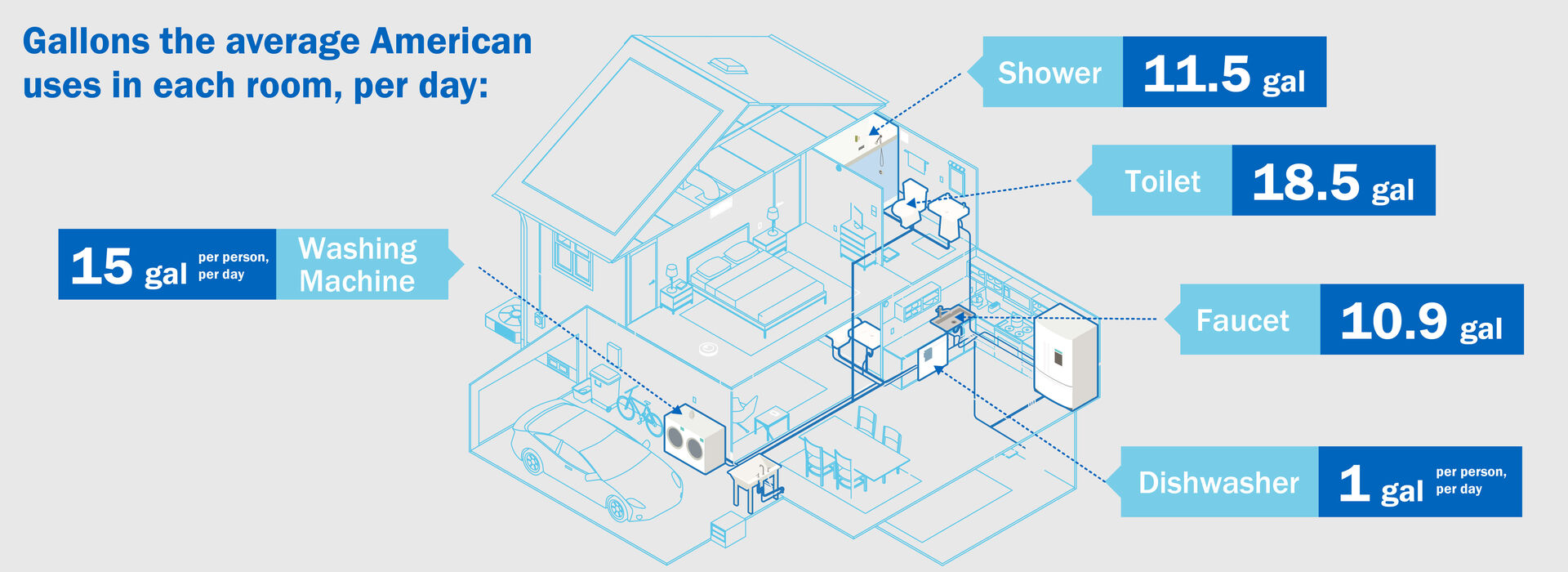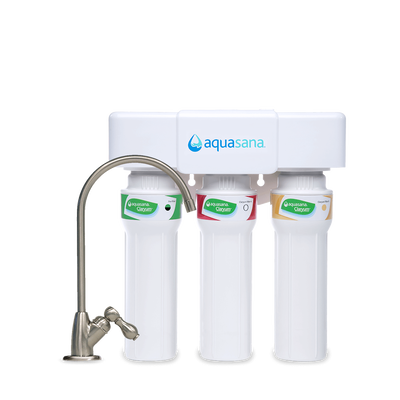Drought
Drought means less water in your local reservoirs, which means less water flowing from your tap. As we’ve previously discussed, thanks to the effects of drought, more than 850 million people worldwide lack access to safe, clean drinking water. But this problem isn’t just outside of the United States. According to the National Resources Defense Council (NRDC), “In the United States, drought is the second-most costly form of natural disaster (behind hurricanes), exacting an average toll of $9.6 billion in damage and loss per event.” Additionally, reports have estimated that between 1960 and 2010, the natural consumption of water, specifically from humans, “increased the frequency of drought by 25 percent.”
But drought isn’t the only environmental factor affecting our water usage in the United States and beyond.
Aging Infrastructure
Our aging infrastructure can also act as a detriment to accessing constantly flowing, clean water. Pipes lined with lead are still a prevalent issue, and older pipes that are corroded or clogged with sediment can also mean you get less water through your faucet at a slower rate. According to the NRDC, “faulty meters, crumbling pipes, leaky water mains—cost the United States an estimated 2.1 trillion gallons in lost drinkable water each year.”
Water pressure in your home can be affected by even more than that, on an individual level. For example, a leak in your pipe isn’t just an added expense to your monthly utility costs, it also lowers your water pressure, as the water escapes through cracks in your pipe instead of going to your faucet. This inhibits water usage on an individual level, and if you’re using well water, on a communal level.
Factors that cause lower pressure
Water pressure in your home can be affected by even more than that, on an individual level. For example, a leak in your pipe isn’t just an added expense to your monthly utility costs, it also lowers your water pressure, as the water escapes through cracks in your pipe instead of going to your faucet. This inhibits water usage on an individual level, and if you’re using well water, on a communal level.
Elevation
The basic rules of gravity say what goes up, must come down. Gravity keeps your water flowing from tap to drain. As a result, how high your home sits, in relation to your water line, can also affect how much water pressure you have in your home. This results in higher or lower water usage on any given day.
Broken pressure regulator
Pressure regulators help stabilize the water pressure in your home. If yours is broken it can cause your water pressure to be too weak or too strong. Having a pressure regulator will help extend the life of your plumbing and features, and help prevent leaks from occurring in your features.
Leaks in plumbing
Leaks in your pipes could be preventing adequate pressure from reaching your faucets and shower heads. Small leaks typically won't affect your pressure, but if you have multiple small leaks or larger leaks this can affect your pressure. In searching for leaks under your sinks and features look for signs of pooling, mold, or mildew as tell-tale signs of a leak. If you are worried you have a leak under your foundation you may want to hire a plumber for an inspection as they have the proper equipment to find those. Leaks under your house can erode away your foundation and cause problems with your house’s structural foundation.
Water usage: Will we ever run out?
So that brings us to a question that won’t just affect the United States as a whole, but all of us individually as well: will we ever run out of water?
The answer is more complicated than “yes” or “no”. For starters, the biggest consumer of water is not one individual person, but the agricultural industry, using 70 percent of clean drinking water across the globe. This includes both crop, and food production. A large portion of water is committed to growing food to feed livestock, making livestock one of the largest consumers of water in the United States.
So while the answer is technically no, we are not running out of water as a whole—we are running out of access to clean, drinking water. According to a report from The Guardian, “about one in nine of the planet’s population – lack access to clean, affordable water within half an hour of their homes”.
Things like climate change and population expansion certainly aren’t helping. With the onslaught of more frequent droughts, fires, and storms, as well as rapid population growth—the ability to get clean drinking water is getting harder by the minute. To make matters worse, researchers at NASA found that 21 out of 37 of the world’s largest aquifers are being depleted lower than their sustainability tipping points. This means that we’re using water from these aquifers faster than we are replenishing them, and as the average water usage increases, these aquifers will deplete even more quickly.
A recent report from Reuters confirms this isn’t just happening the world over, but in our own backyard, too. “As many as 96 water basins out of the 204 supplying most of the country with freshwater could fail to meet monthly demand starting in 2071…”
So what can you do? A few things can certainly help on the individual level: going vegetarian 2-3 times a week is recommended since, as mentioned above, the the meat industry is one of the largest water consumers in the country. Learning about the impacts of climate change and what we can do to lessen our carbon footprint can help, too. More than anything, investing in a water filtration system will help ensure that you can access clean, drinking water, no matter what. If you invest in a filter bottle, for every one of our cartridges you use, you save 600 disposable water bottles from entering the environment. We can “cheers” to that.

